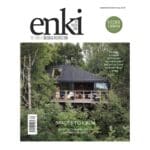
“I hope my work brings a calming simplicity and tranquility that invites people to slow down but also gives them a sense of wellbeing and serenity. I want my work to allow people to feel.”
Emilie Van Camp, founder and artist, Iya Gallery.
Meet the founder and abstract ink and watercolour painter behind the mindfully curated Iya Gallery, Emilie Van Camp.
Emilie’s work is beautifully minimalist and poetic in its style and the essence of her watercolour pieces draws on the two main characteristics of the Japanese wabi-sabi aesthetic: kanso, which means simplicity, and seijaku, meaning tranquility.
Finding joy and a sense of reconnection through her work, she explains that every brushstroke is a reflection of her state of mind as she works by following a slow and intuitive process.
We took the opportunity to catch up with Emilie who spoke to us with passion and enthusiasm about her artwork and what she hopes it brings to other people’s homes. She opens up and lets us in on her personal journey, including how she learnt her craft and how her art gives her a chance to ‘heal’, and she reveals the news of her new Zen Ink Brushwork workshop, which is in the pipeline…

Can you tell us about yourself and what inspired you to start your own business?
As a young child, I always admired people who were able to bring beauty into this world, by creating something of their own or transforming one thing into another. I loved the idea of simply making people feel something no matter what their medium was; anyone from painters, writers, sculptors, ceramists, photographers, inventors, and makers.
So, naturally, Iya Gallery started with a profound desire to create, to be part of a creative environment, to be able to share but also to emotionally connect with not only the world and others but also with myself.
What inspired the name of Iya Gallery?
I never thought I would one day have my own brand, so when it came to naming it I wanted to do so after something that had been extremely meaningful to both my own personal growth and creative journey. Back in 2017, five months after experimenting with watercolour for the very first time, one of my wildest dreams became reality – I travelled to Japan for three weeks. There we stayed for a few nights in an incredible 300 year-old thatched house in a small secluded village in Iya Valley and everything changed!
For the first time in my life I felt I belonged, I felt grounded, and I felt I knew who I was and most importantly I was at peace. When I came home, I created Iya Gallery in homage to my time spent there.
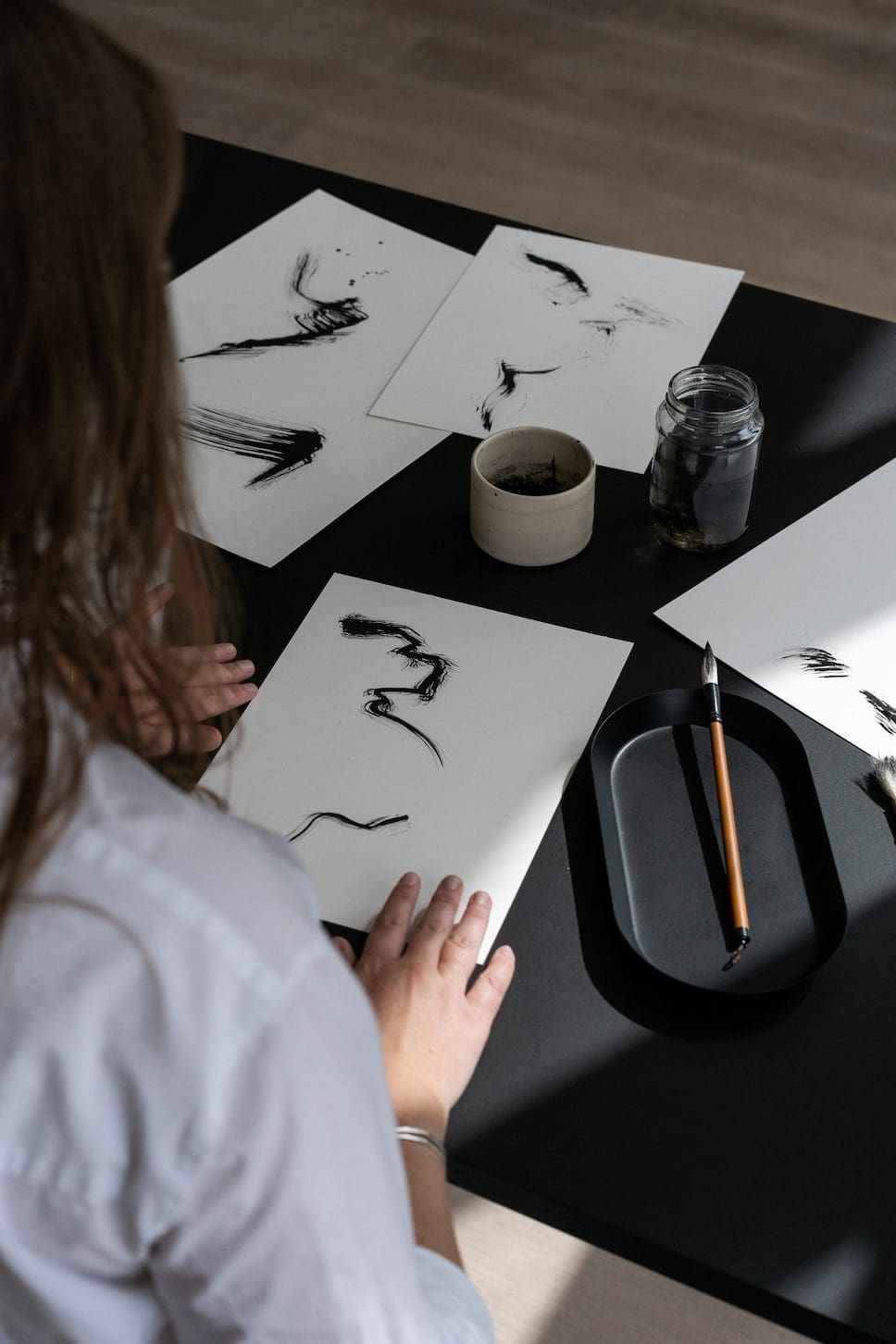

How did you learn your craft?
I often feel that I just fell into it, that it sort of found me. Watercolour wasn’t my first choice of medium; over 20 years ago I had art lessons at school and I started my creative journey painting with oil. It couldn’t be more different, yet without realising it back then the process was very much the same; expressing my emotions and trying to find peace within myself.
I hadn’t picked up a brush for over a decade when I discovered the work of artist Satsuki Shibuya and suddenly that dormant urge to create came rushing back. I not only felt moved by her watercolour and inspired by her soulful words, but I also wanted to try that medium thinking it might bring me the same emotions that I was feeling while I was looking at her work.
The use of ink only came later on; although I had always been fascinated with Japanese Sumi-e ink painting and Shōdo practices, I had never used it before in my work. However, after creating something bespoke for a collaboration, I decided to continue exploring it and I love it!
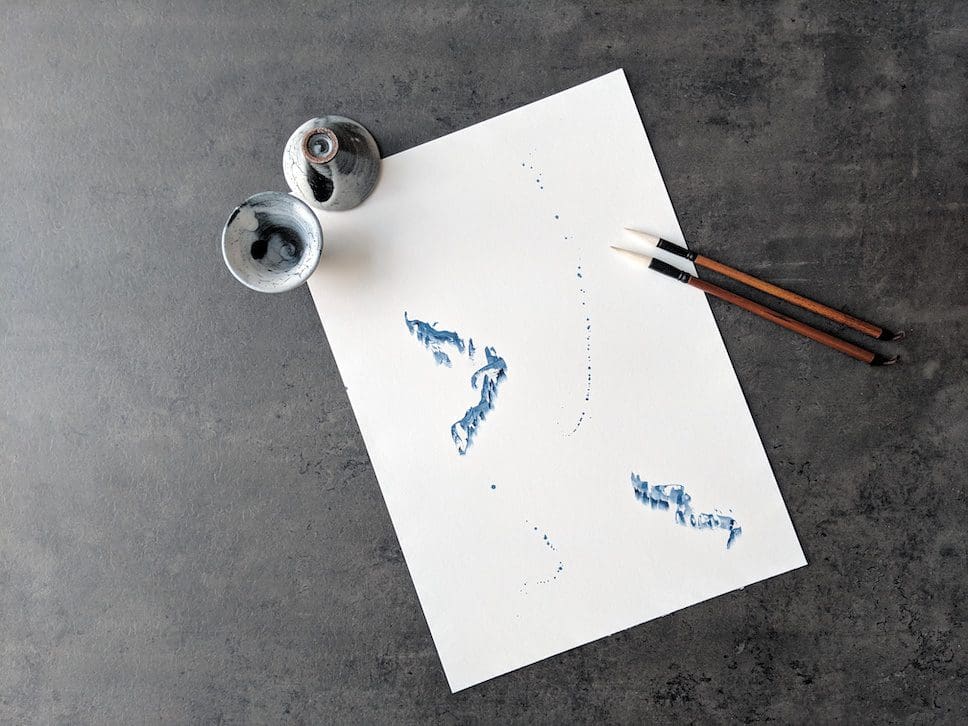
Can you tell us about the process from coming up with the initial design through to production?
Unless I am working on a commission and I’ve received some direction, the only predetermined elements of any painting would be the medium, the brushes, and the paper I use. For the rest, it is a very intuitive and spontaneous process.
How does your work reflect a ‘meditative flow state of mind’?
Each brush stroke reflects my state of mind and each movement becomes like a meditative gesture, as it is all very slow and very intuitive searching for happiness and peace. Nothing is rushed, nothing is controlled: the whole process is extremely therapeutic. I tend to create in series, so I never just make one piece, it is a continuous flow of emotions and thoughts brushed onto paper.
As I mentioned previously, Iya Gallery started with a profound desire to create but also a need to heal and give myself a sense of self. I often felt (and still do) consumed by my emotions and thoughts but also by the fast-paced way of living and I needed to find moments of quiet and solace within. Picking up my brushes and letting these emotions and thoughts run onto paper is way to express myself, mentally and emotionally, to accept but also to look inwards.
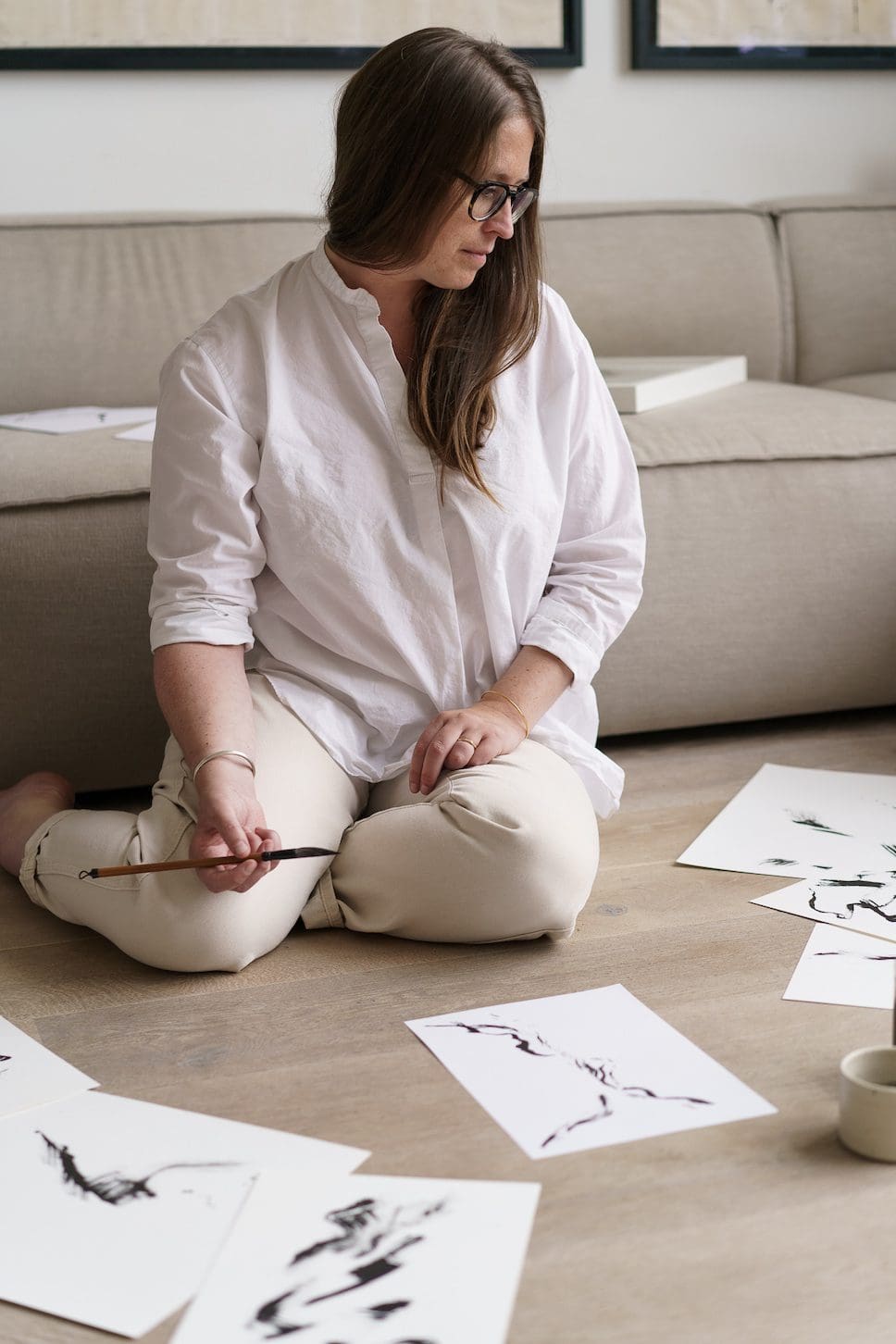
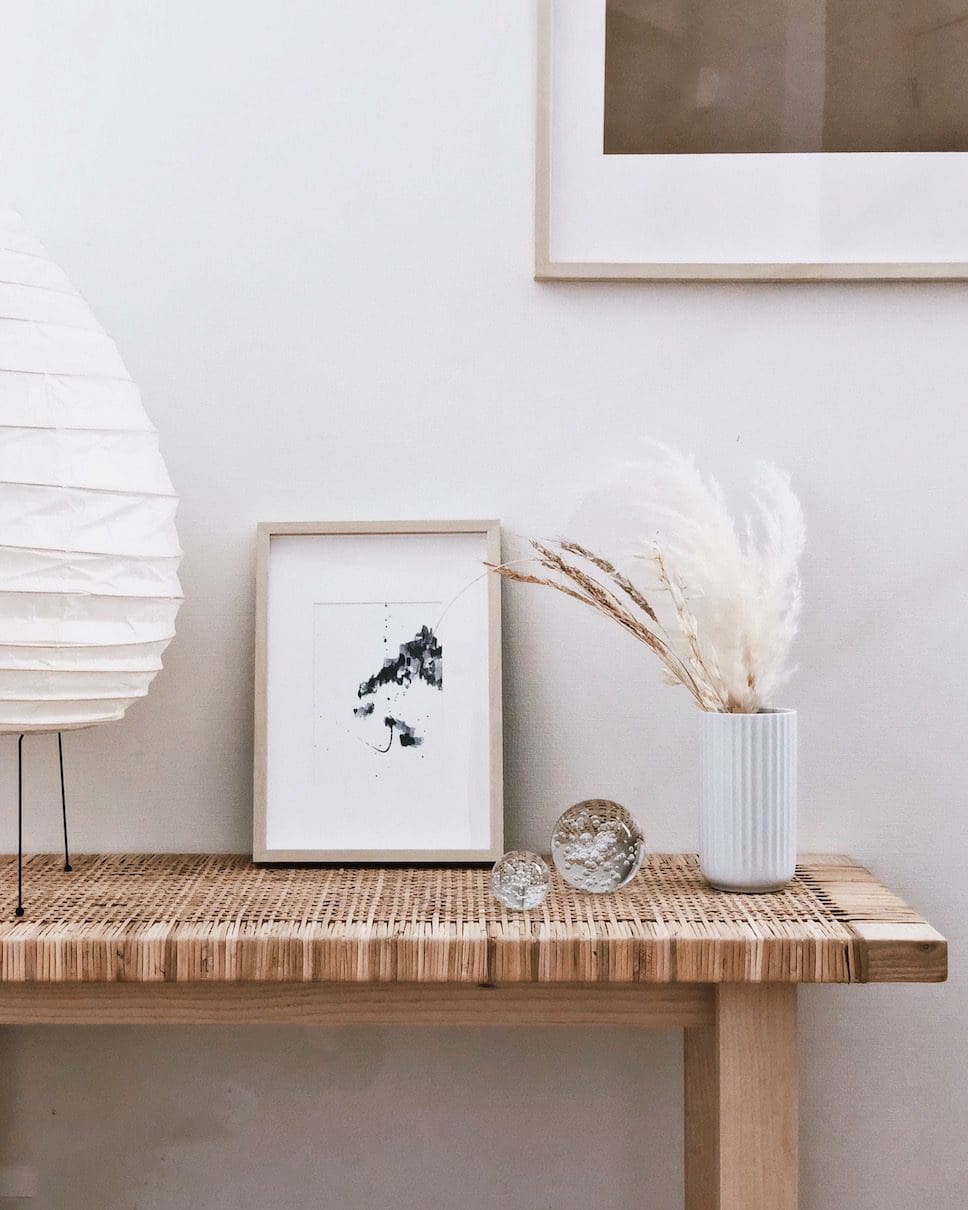
Where do you look for inspiration?
As the process is very intuitive, the smallest thing can become a source of inspiration as it would lead me to feel certain emotions or have certain thoughts. For example, a walk in the park, the sound of the wind, shadows dancing on the floor, a sentence in a book, a picture, a silent exchange, or a memory.
How would you explain the ‘wabi-sabi aesthetic’?
I feel it is a very complex aesthetic to explain, mainly as it is a Japanese cultural concept found in many forms of their art that doesn’t have a specific translation, yet supposedly it is a very simple one in its essence. It is often described as being able to appreciate and perceive beauty in what is ‘imperfect, impermanent, and incomplete’, yet it embraces a variety of characteristics all at once.

What does craftsmanship mean to you and how do you put attention to detail into your designs?
I have a real respect and admiration for craftsmanship, especially Japanese ones. The love, passion, dedication, knowledge, and level of care someone can put in their craft is the most beautiful thing to witness. I have always been fascinated by people creating something with their hands.
For me it involves the entire process, it goes beyond the creation and production but also the customer reception. I enjoy spending time checking over the fine details, wrapping an order, selecting a sticker to embellish the packaging, and considering every step of the process.
In what ways are you environmentally conscious in your work?
I am conscious both in the process of creating my work with very little materials but also finding recyclable packaging. I try to live by shop less but shop quality and produce without excess.

What do you hope your artworks bring to other people’s homes?
I hope my work brings a calming simplicity and tranquility that invites people to slow down but also gives them a sense of well-being and serenity. I want my work to allow people to feel.
What are your hopes and plans for the rest of 2023 and beyond?
I am currently working on a Zen Ink Brushwork workshop offering that I am hoping to launch this year and I am also looking into two new projects that are quite meaningful to me and see where they will take me.
I hope to work on some exciting collaborations with interesting people and reach a wider audience. Also, one day I hope to be able to have a studio of my own and simply be able to continue creating what I love and what makes me happy every day.
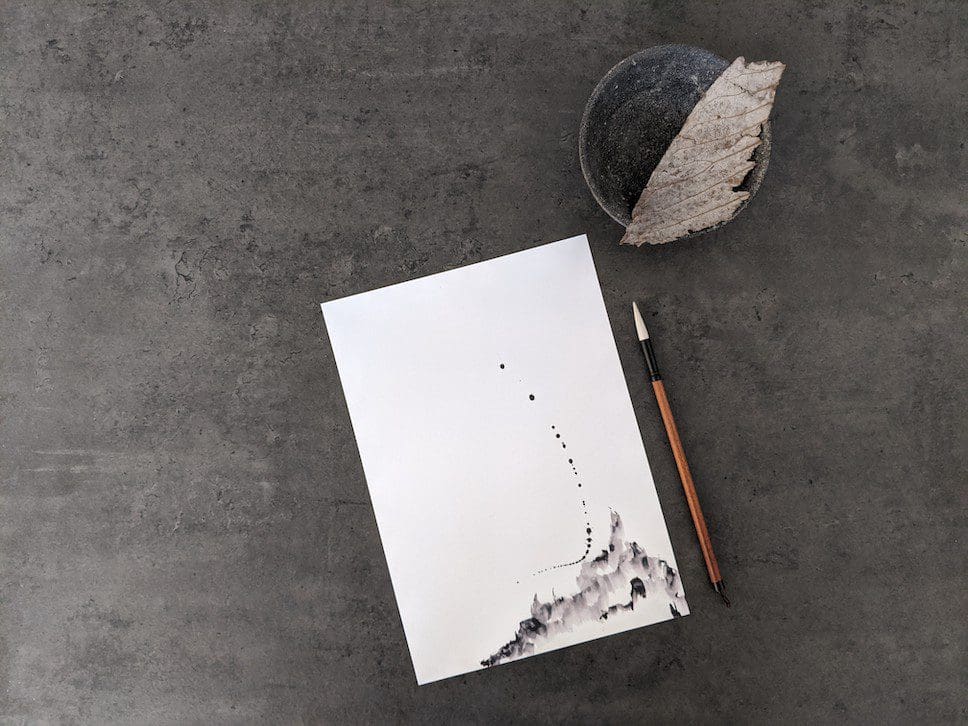
Photography courtesy of Emilie Van Camp, unless otherwise stated in captions.
Take a look at the full collection of abstract original ink and watercolour paintings and prints by Emilie Van Camp, available online at IYA Gallery.
Read more Meet the Maker interviews here on enki, including our most recent discussions with Danish paper artist Silke Bonde and designer-maker duo Sammy and Glen of Pachadesign.
